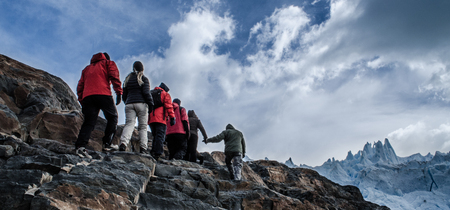1. Choosing the Right Trail
Learn How to Pick Beginner-Friendly Hiking Trails
If youre new to hiking in the US, picking the right trail is your first big step. Not all hikes are created equal—some are easy strolls, while others can be challenging climbs. To make sure you have a great first experience, look for beginner-friendly trails that are well-marked, not too long, and have gentle elevation changes.
Understanding Trail Ratings
Most US hiking trails are rated by their difficulty. Here’s a simple breakdown to help you find the best fit:
| Rating | Description |
|---|---|
| Easy | Short distances (usually under 3 miles), little to no elevation gain, wide and well-maintained paths. |
| Moderate | Longer distances (up to 6 miles), some hills or uneven terrain, may require a bit more stamina. |
| Difficult | Steep inclines, rough paths, longer hikes (over 6 miles), better for experienced hikers. |
Popular US Locations for Novice Hikers
The United States is packed with beginner-friendly hiking spots! Here are some popular locations where new hikers can enjoy safe and scenic trails:
| Location | State | Recommended Trail |
|---|---|---|
| Great Smoky Mountains National Park | Tennessee/North Carolina | Laurel Falls Trail (2.6 miles round trip) |
| Zion National Park | Utah | Riverside Walk (2 miles round trip) |
| Muir Woods National Monument | California | Main Trail Loop (2 miles round trip) |
| Cuyahoga Valley National Park | Ohio | Ledges Trail (2.2 miles loop) |
| Acadia National Park | Maine | Jordan Pond Path (3.5 miles loop) |
Quick Tips for Picking Your First Trail:
- Check the trail length and elevation gain before heading out.
- Read recent reviews on websites like AllTrails or the park’s official page.
- If possible, start with trails close to home so you can get used to hiking at your own pace.
- Avoid remote or poorly marked trails until you feel more confident.
- Always let someone know your plans before you go hiking for the first time.
With so many beautiful places to explore and easy-to-follow trails across the country, starting your hiking journey in the US can be both exciting and accessible!
2. Essential Gear and Clothing
Must-Have Hiking Gear for Beginners
Before you hit the trails, its important to have the right equipment. The good news is, you don’t need to break the bank to get started. Here’s a simple breakdown of essential hiking gear for anyone starting out in the US:
| Item | Why You Need It |
|---|---|
| Daypack (Backpack) | Carries your water, snacks, extra clothes, and other essentials. |
| Comfortable Footwear | Good trail shoes or hiking boots help protect your feet and provide traction on uneven terrain. |
| Water Bottle or Hydration System | Staying hydrated is crucial, especially in the American West or during summer hikes. |
| Snacks/Energy Bars | Quick energy boosts for long hikes; think trail mix, jerky, or granola bars. |
| Navigation Tools | A map, compass, or GPS app can keep you on track—cell service can be spotty in many US parks. |
| First Aid Kit | For minor injuries or blisters; always a smart idea even for short hikes. |
| Sunscreen & Bug Spray | The sun and bugs can be intense on US trails! |
| Headlamp or Flashlight | If you’re out longer than expected, you’ll want light to find your way back safely. |
Layering Techniques for Changing Weather
The weather in America can shift quickly—especially in places like Colorado, the Pacific Northwest, or the Appalachians. Layering your clothes helps you stay comfortable no matter what Mother Nature throws at you. Here’s how to do it:
The Three-Layer System
| Layer | Description & Example Items |
|---|---|
| Base Layer | Wicks moisture from your skin. Look for synthetic shirts or merino wool. Avoid cotton since it stays wet and makes you cold. |
| Insulating Layer | Keeps you warm. Fleece jackets or lightweight puffy vests work well for most US regions. |
| Outer Layer (Shell) | Protects against wind and rain. A waterproof jacket is great if youre hiking anywhere from Oregon to New England. |
Packing Smart: Light but Prepared for American Terrain
Packing light doesn’t mean leaving important things behind—it means making smart choices about what goes in your backpack. Here are a few tips tailored for US hiking:
- Select multi-use items: A bandana can serve as a towel, head covering, or emergency bandage.
- Check the forecast: American weather apps are pretty reliable—plan layers accordingly.
- Pack only what you need: For most day hikes in national parks or local trails, keep it simple: water, snacks, map/app, and basic first aid are usually enough.
- Add region-specific items: In bear country (like parts of Montana), consider carrying bear spray; for desert hikes in Arizona, pack extra water and sun protection.
This approach keeps your pack light while ensuring you’re prepared for the diverse terrain and climates across the United States. As you gain experience, youll discover what works best for you on different types of American trails!

3. Safety and Trail Etiquette
Key Safety Tips for Beginner Hikers
Staying safe on the trail is all about being prepared and aware of your surroundings. Here are some must-know safety tips every beginner should follow when hiking in the US:
- Know Your Trail: Always research your chosen trail before heading out. Check the distance, elevation, and difficulty level to make sure it matches your experience.
- Tell Someone: Let a friend or family member know where you’re going and when you expect to be back, especially if you’re hiking solo.
- Packed Essentials: Bring enough water, snacks, a map (or GPS), and extra layers for changing weather.
- Check the Weather: US weather can change fast, so look up the forecast before you go and be ready to turn back if conditions worsen.
Understanding Trail Markers
The US has a variety of trail marking systems, usually color-coded blazes painted on trees or rocks. Knowing these symbols helps you stay on track and avoid getting lost.
| Marker Type | Description | What It Means |
|---|---|---|
| Single Color Blaze | One colored rectangle or dot | Main trail path—follow straight ahead |
| Double Blaze (stacked) | Two rectangles, one above the other | Trail is turning—pay attention to direction |
| X Marker or Red Slash | X shape or diagonal slash through blaze | Do not enter—wrong way or closed trail |
Wildlife Awareness on American Trails
The US is home to amazing wildlife—from deer and chipmunks to bears and snakes. Staying aware helps keep both you and animals safe:
- Keep Your Distance: Never approach or feed wild animals, even if they seem friendly.
- Make Noise: Talking or clapping as you hike alerts animals to your presence so you don’t surprise them.
- Bears: In bear country, carry bear spray and know how to use it. Store food in bear-proof containers when camping overnight.
- Snakes: Watch where you step, especially in rocky areas or tall grass. Most snakes want to avoid people!
The Leave No Trace Principles
The Leave No Trace (LNT) principles are widely followed across US trails. Practicing these helps keep nature beautiful for everyone:
| LNT Principle | Description/Example |
|---|---|
| Plan Ahead & Prepare | Check regulations and pack what you need for safety. |
| Travel & Camp on Durable Surfaces | Stay on marked trails and camp at designated spots. |
| Dispose of Waste Properly | Cary out all trash, including food scraps and wrappers. |
| Leave What You Find | No picking flowers or taking rocks; leave nature as is. |
| Minimize Campfire Impact | If fires are allowed, use established fire rings only. |
| Respect Wildlife | Observe from a distance and never disturb animals. |
| Be Considerate of Others | Yield to uphill hikers, keep noise down, share the trail. |
A Quick Guide: Trail Etiquette Basics in the US
- Right of Way: Hikers going uphill have the right of way. Step aside for them when heading downhill.
- No Loud Music: Keep headphones low or enjoy the natural sounds instead of playing music out loud.
- Packed Out is Packed In: If you brought it with you, take it out—even biodegradable items like fruit peels!
Your Hiking Experience Matters!
Treating nature with respect, staying alert, and following local customs makes hiking safer and more enjoyable for everyone using America’s incredible trails.
4. Understanding US Hiking Culture
Insights into American Hiking Terms
If you’re new to hiking in the US, you’ll notice some unique lingo out on the trail. Here’s a handy table to help you get familiar with common hiking terms:
| Term | Meaning |
|---|---|
| Trailhead | The starting point of a hiking trail |
| Blaze | A mark on trees or rocks showing the path of the trail |
| Switchback | A zigzag path up or down a steep slope to make hiking easier |
| Daypack | A small backpack for carrying essentials on short hikes |
| No Trace/Leave No Trace (LNT) | The principle of leaving nature as you found it—carry out all trash and minimize your impact |
| Summit | The highest point of a hike or mountain |
| Trail Angel | A person who helps hikers by offering snacks, water, or rides (especially on long-distance trails) |
| Thru-hiker | Someone who hikes an entire long-distance trail from start to finish in one trip (like the Appalachian Trail) |
Local Customs and Trail Etiquette in the US
American hikers follow some unwritten rules to keep the trails safe and enjoyable for everyone. Here are a few customs to keep in mind:
- Right of Way: Hikers going uphill have the right of way. Step aside for those coming up if you’re heading down.
- Stay on Marked Trails: Don’t cut switchbacks or create new paths; this helps preserve the environment.
- Pack It In, Pack It Out: Bring back everything you brought, including food wrappers and trash.
- Yield to Horses: If you meet horseback riders, step off the trail on the downhill side and let them pass.
- Keep Noise Down: Enjoy nature quietly so others can too.
- Pups on Leash: Many trails require dogs to be leashed. Always pick up after your dog.
- Trail Greetings: A friendly “hello” or nod is common when passing fellow hikers.
Connecting with the American Outdoor Community
Finding Hiking Groups and Meetups
The US has a vibrant outdoor community that welcomes newcomers. Here’s how you can get involved:
- Meetup.com: Search for local hiking groups in your area. Many organize beginner-friendly outings.
- Sierra Club and REI Co-op Events: These organizations host free or low-cost group hikes across the country.
- Parks and Recreation Departments: Local government programs often organize guided hikes and workshops.
- Social Media: Follow #HikingAdventures, #TakeAHike, or your state’s hiking hashtags on Instagram and Facebook to connect with local hikers.
- Volunteer: Join trail clean-up events to meet people and give back to your local parks.
Tapping Into Regional Trail Networks
The US is vast, and each region has its own hiking hotspots and communities. Whether you’re exploring the Appalachian Mountains in the East, red rock canyons in the Southwest, or forested trails in the Pacific Northwest, you’ll find welcoming folks eager to share tips and stories. Don’t hesitate to ask locals about their favorite trails—they’ll often point you toward hidden gems!
5. Planning Your First Hike
Step-by-Step Guide to Preparing for Your First US Hike
Getting ready for your first hike can feel overwhelming, but with some simple steps, you’ll be hitting the trails with confidence. Here’s how to plan your adventure like a pro.
Step 1: Choose Your Trail
Start with an easy trail that matches your fitness level. Use popular US hiking resources and apps to help you decide:
| Resource/App | Description |
|---|---|
| AllTrails | Find trails, read reviews, see maps, and get trail conditions from other hikers. |
| Hiking Project | Discover detailed info about US trails including elevation gain and user ratings. |
| National Park Service (NPS) website | Official info on national park hikes, closures, and safety alerts. |
Step 2: Map Out Your Route
Once you pick a trail, download or print a map. Most trailheads in the US don’t have cell service, so having an offline map is crucial. AllTrails lets you download maps if you use their app. Mark key points like parking areas, restrooms, water sources, and the turnaround spot if you’re not doing a loop.
Step 3: Check Weather Conditions
The weather can change quickly in many parts of the US. Always check before you go:
- Visit Weather.gov for local forecasts.
- The National Park Service website often posts real-time alerts for parks and trails.
- If using AllTrails or Hiking Project, look for recent hiker comments on weather and trail conditions.
Step 4: Tell Someone Your Plan
This is a must-do in US hiking culture. Share your trail choice, expected start and finish time, and who’s going with you. Text or call a friend or family member so they know where you’ll be—just in case.
Step 5: Pack Smart Using an Essentials Checklist
Packing light but safe is key. Here’s a simple starter checklist:
| Item | Why You Need It |
|---|---|
| Water & Snacks | Stay hydrated and energized—bring more than you think youll need! |
| Map & Compass/GPS App | You might lose cell service; always have a backup navigation method. |
| Sunscreen & Hat | The US sun can be intense even on cloudy days. |
| First Aid Kit | Treat blisters or minor scrapes easily. |
| Layered Clothing/Rain Jacket | Weather can change fast—be prepared for anything. |
| Cell Phone (charged) | For emergencies—remember it may not always have signal! |
| ID & Emergency Contact Info | If something happens, responders will know who you are. |
Your Hiking Prep Checklist:
- Select an easy trail using AllTrails or Hiking Project.
- Download or print your trail map ahead of time.
- Check the weather right before you leave home.
- Tell someone where you’re going and when to expect you back.
- Pack the essentials listed above—and don’t forget your sense of adventure!
Your first hike in the US doesn’t have to be complicated. With these planning tips and handy resources, you’ll be ready to enjoy nature safely and confidently!

